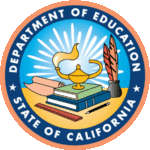The resource directory is searchable and contains articles, tools, recordings, and links to websites. The resources are also categorized by topics, including the five Focus Areas suggested by the California Department of Education. Use the Search box below or click on the topical links to access the resources. (Hint: Once you have done an initial search, you will be able to sort the results by Resource Name or Publication Date.)
The book looks at the different avenues in the schooling process that can lead to underserved and routinely disciplined students entering the prison system. It is important for practitioners to read because it highlights the legal rights students have that may thwart some of the forces that contribute to the school to prison pipeline.
Kim, C. Y, Losen, D. J., and Dewitt, D. T. The school-to-prison pipeline: Structuring legal reform. New York: New York University Press, 2010.
Newsletter addressing legal, policy, and human aspects of disproportionate representation.
California Department of Education (2010).
A national, federally funded center that provides capacity-building information and technical assistance for identifying, adapting, and sustaining effective school-wide disciplinary practices. Includes valuable tools and materials for school use.
In this video educational leaders discuss the challenges presented by and impacts experienced from implicit bias in schools.
The Voice: Highlights from 2018 (The Voice). 2018. Vialogue. EdLab Teachers College: Columbia University.
The article surveys existing research on disproportionality and outlines three common perspectives used to explain the issue. It is useful for practitioners because it shows how experts have tried to understand factors associated with disproportionality.
Waitoller, F. R., Artiles, A. J., and Cheney, D. "The Miners’ canary: A Review of Overrepresentation Research and Explanations." Journal of Special Education, 44(1), 2010:29-49
DEI Training includes the following 6 strategies: Differentiation & Vertical Alignment, Inclusivity, Open Discussion, Opportunities for Reflection, Connection to a bigger strategic plan, and Prioritization
Harte, A. "6 Strategies for Successful Diversity, Equity, and Inclusion Training." Edutopia, (2022).
McIntosh, Kent, Girvan, Erik J., Horner, Robert H., Smolkowski, Keith, and Sugai, George. 2018. “A 5-Point Intervention for Enhancing Equity in School Discipline.” Positive Behavioral Interventions and Supports (PBIS) February 2018.
Authored by the nation’s experts in PBIS, this article provides insights into cultural responsiveness as a key component in creating equitable positive behavioral supports.
McIntosh, Kent, Girvan, Erik J., Horner, Robert H., Smolkowski, Keith, and Sugai, George. 2018. “A 5-Point Intervention for Enhancing Equity in School Discipline.” Positive Behavioral Interventions and Supports (PBIS) February 2018.
The tool from the National Center for Culturally Responsive Education Systems Training (NNCREST) provides an overview of how RtI can be understood and used with diverse learners. It is useful for practitioners because it offers insight into how RtI can extend beyond a policy prescription in order to truly be responsive to all learners.
Esparza Brown, J., and Doolittle, J. A Cultural, Linguistic, and Ecological Framework for Response to Intervention with English Language Learners. Washington, DC: Office of Special Education Programs, U.S. Department of Education, 2008.
The authors discuss the need to have a mutli-facted approach to family engagement. They suggest tailoring family suppports and engagement based upon the family's specific needs.
Bachman, H. F., & Boone, B. J. (2022). A Multi-Tiered Approach to Family Engagement: No two families are alike, so why should schools’ approach to supporting families be cookie cutter? Educational Leadership, 80(1), 58–62.
This research study shows how African American students were seven times and Native American and Latino students were two times more likely to receive exclusionary discipline in the state of Wisconsin.
Bal, Aydin, Jennifer Betters-Bubon, and Rachel E. Fish. 2019. “A Multilevel Analysis of Statewide Disproportionality in Exclusionary Discipline and the Identification of Emotional Disturbance.” Education and Urban Society 51 (2): 247–268.


